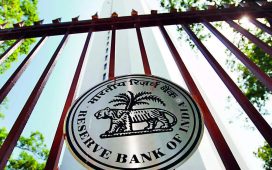
This growth underscores the sector’s vital role in supporting India’s agricultural productivity and food security.
In 2023, the Indian fertilizer market size stood at Rs 94,210 crore, driven by increased agricultural demands and strategic governmental interventions.
Fertilizer production in FY24 was recorded at 45.2 million tonnes, reflecting the Ministry of Fertilizers‘ successful policies.
India’s position as the world’s second-largest producer of fruits and vegetables, next only to China, underpins the fertilizer industry’s growth.
Government initiatives like direct income support schemes from both central and state governments have also bolstered farmer liquidity, enhancing their ability to invest in fertilizers.Programs such as PM-KISAN and PM-Garib Kalyan Yojana have received endorsements from the United Nations Development Programme for their contributions to food security.The geopolitical landscape has further influenced India’s fertilizer market. The government has emphasized producing nano liquid urea domestically, aiming to stabilize fertilizer prices.
Minister Mansukh Mandaviya announced plans to increase the number of nano liquid urea production plants from nine to thirteen by 2025. These plants are projected to produce 44 crore bottles of 500 ml nano urea and di-ammonium phosphate (DAP).
Aligning with the Atmanirbhar Bharat initiative, India’s dependency on fertilizer imports has decreased markedly. In FY24, urea imports declined by 7 per cent, DAP by 22 per cent, and NPKs by 21 per cent. This reduction is a significant step towards self-sufficiency and economic resilience.
The government has mandated 100 per cent Neem coating on all subsidized agricultural grade urea to enhance nutrient efficiency, improve crop yield, and maintain soil health, while also preventing the diversion of urea for non-agricultural purposes.
India has also established itself as a global leader in nano agricultural inputs, including nano fertilizers and micro-nutrients, promoting environmental sustainability without compromising crop yields.
The Indian government aims to achieve self-sufficiency in urea production by 2025-26 through increased local production of nano urea.
Additionally, the Paramparagat Krishi Vikas Yojana (PKVY) promotes organic farming, offering Rs 50,000 per hectare for three years, with INR 31,000 directly allocated to farmers for organic inputs. The potential market for organic and bio fertilizers is poised for expansion.
Climate change poses a significant challenge, with projections suggesting a potential 19.3 per cent reduction in wheat yields by 2050 and 40 per cent by 2080.
To address this, the National Mission for Sustainable Agriculture (NMSA) is implementing strategies to make Indian agriculture more resilient to climate change.
The government is also focused on reviving closed fertilizer plants in Talcher, Ramagundam, Gorakhpur, Sindri, and Barauni, and on educating farmers about balanced fertilizer use, crop productivity, and the benefits of cost-effective subsidized fertilizers.
Continuous research and innovation are essential for developing new types of fertilizers and improving existing ones.










